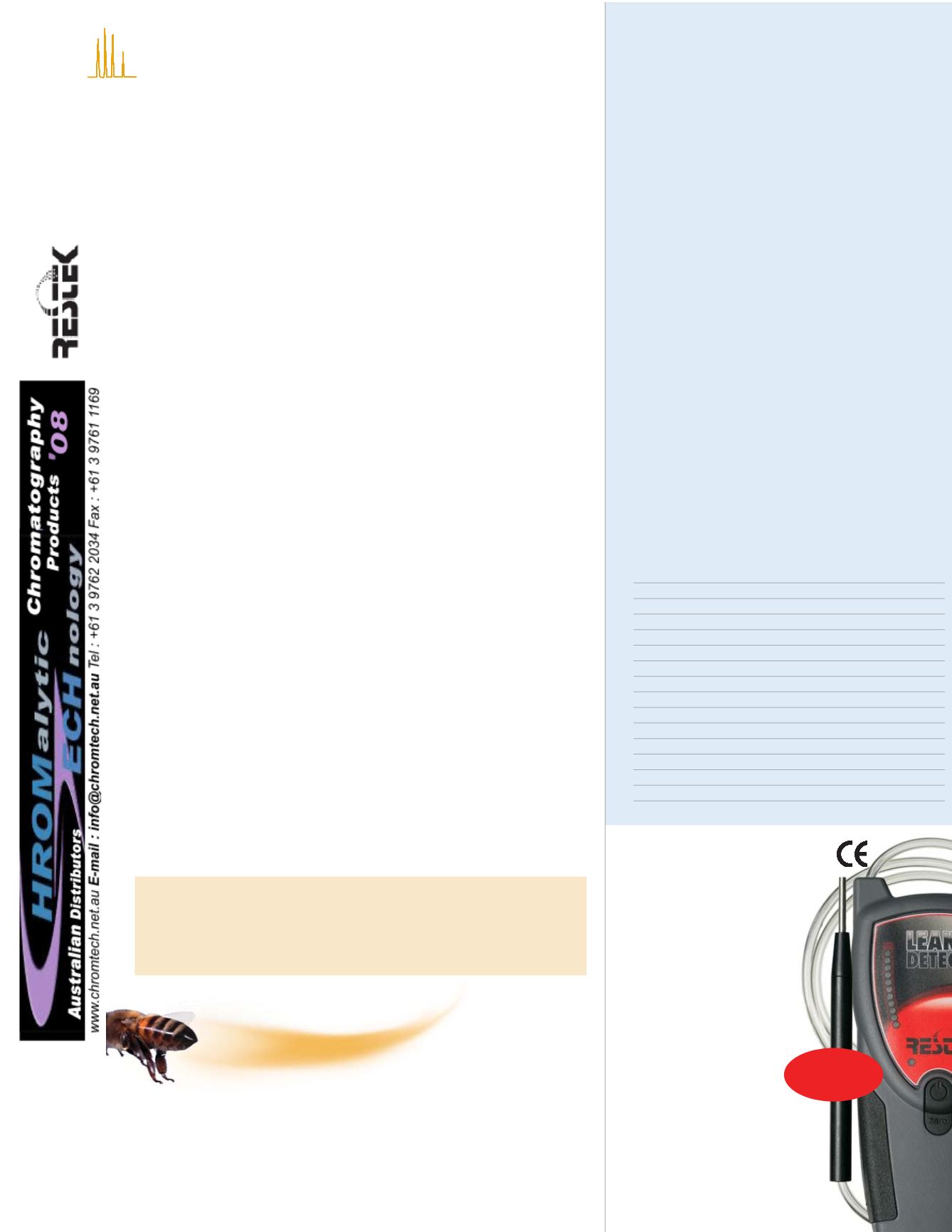

• 23 •
2008 vol. 2
Editorial
process than the hard electron impact ionization in GC/MS. It is insufficient
to declare that in LC/MS no major matrix effect is apparent with respect to ion
suppression just based on quenching of signal intensity of a single infused
compound. This single compound may have characteristics that make it less
vulnerable to matrix effects, and thus unsuitable to explore matrix effects. Far
better suited are classical approaches, most importantly the use of isotope
labeled internal standards. Quality control in metabolomics means that the
short-term and long-term influence of matrix effects is carefully evaluated by
comparing the metabolite coverage and their relative quantification levels to
expected values from background knowledge. Only if quantification of a range
of well-known target metabolites validates a specific analytical protocol, can
unbiased analysis be furthered to the level of metabolomics and comprise
novel metabolite signals. Such integration of classical analytical strategies with
modern unbiased data analysis should also include randomized sample
sequences, blank controls, and bracketing samples with external calibration
standards.
Among the most difficult challenges in metabolomics is the annotation of
unknown metabolic signals. The Metabolomics Standards Initiative (MSI) has
issued a variety of suggestions for reporting minimal experimental parameters
to ensure that metabolomic data can be used and reproduced by other labo-
ratories. Importantly, the identification of metabolites must always be based
on at least two orthogonal physicochemical characteristics, such as retention
index and mass spectrum. Identifications that are based on authentic chemical
standards are generally more trustworthy than annotations based on calculated
characteristics. Nevertheless, the metabolome itself is an unrestricted entity that
clearly comprises more than the suite of known compounds to be found in
classical textbooks or that can be purchased from chemical manufacturers.
The metabolome cannot be simply computed from reconstructed biochemi-
cal pathways due to enzymatic diversity, substrate ambiguity, and variation in
regulatory mechanisms. Hence, the finding of many unknown signals in
metabolomic surveys comes as no surprise to biochemists. The sheer com-
plexity of natural products, including isomeric compounds, renders the use of
accurate masses and database queries insufficient for annotation of metabolites.
Instead, novel algorithms are needed to score metabolic signals based on all
available information, from calculated physicochemical characteristics to
presence in biochemical databases. Such algorithms might ultimately boost the
quality of metabolomic data in a similar way as SEQUEST® did for proteomic
analysis. Yet, no software is available to perform this much-needed task.
Quality Control in
Metabolomics
Continued from page 2
price
Why let a
tiny leak
become a
GIANT
problem?
Protect your data
and analytical
column by using a
Restek Leak Detector!
Order yours today!
www.restek.com/leakdetectorTradeshow Schedule
July, 2008
Show:
Florida Pesticide Residue Workshop (FPRW)
Date:
July 20-23
Location: TradeWinds Island Grand, St. Pete Beach, FL
Show:
18th IAFS Triennial Meeting
(International Association of Forensic Siences)
Date:
July 21-26
Location: New Orleans Marriott Hotel, New Orleans, LA
Show:
NSRA -- 39th Street Rod Nationals
Date:
July 31-Aug. 3
Location: Kentucky Expo Center, Louisville, KY
August, 2008
Show:
28th International Symposium on Halogenate
Persistent Organic Pollutants (Dioxin 2008)
Date:
Aug. 17-22
Location: ICC, Birmingham England UK
September, 2008
Show:
122nd AOAC International
Annual Meeting & Exposition
Date:
Sep. 21-24
Location: Hyatt Regency Dallas, Dallas, TX
Show:
Northeastern Association of
Forensic Scientists (NEAFS)
Date:
Sep. 30-Oct. 4
Location: Renaissance Westchester Hotel, White Plains, NY
Seminar Schedule
Date Cat. # City
State
Comprehensive HPLC
7/22 65733 Linden
NJ
7/23 65734 Melville
NY
7/24 65735 Parsippany
NJ
GC/MS Training Seminar
7/28 65736
Blue Ash
OH
7/29 65737
Lexington
KY
7/31 65738
Research Triangle Park NC
Petrochemical Seminar
9/8
65739
Seattle
WA
9/9
65740
Richmond
CA
9/11 65741
Long Beach
CA
9/12 65742
Salt Lake City
UT
9/30 65743
Edison
NJ
Restek On-the-Road
Catch the
Buzz
Sign up for Restek’s e-newsletter,
The Buzz
www.restek.com/buzzDr. Oliver Fiehn
is a leading researcher in the field of metabolomics. He is a
Professor in the Genome Center at the University of California, Davis. Dr.
Fiehn’s research focuses on developing and applying analytical and bioin-
formatic methods, primarily GC/MS and LC/MS, in order to unravel the
changes in metabolic networks in sets of biological situations.
NEW!











